As responsible travelers evolve, so do the stories we share.
This article is part of our living archive — trusted content we continue to care for.
First published on February 25, 2020 • Last updated on February 1, 2021.
It started decades ago with a single folk artist living in Tigua – Julio Toaquiza. The men in his village had a long tradition of painting masks and drums. An art dealer in Quito asked Julio to paint on a flat surface and a new school was born. Today, there are several generations of Toaquizas painting in the “naif” style of Tigua – bright and colorful compositions that portray the agricultural lifestyle of the local population. Many of my favorites include the Volcano Cotopaxi, llamas roaming the hillsides with shepherd in tow, women spinning wool outside their homes, and condors flying high above it all. The best paintings include a little of everything so that each time you look, you see a new detail.
The Toaquiza Family
My first introduction to Julio Toaquiza was via his family in Quito. His son, Gustayo, operates a small stand at the artisan’s market in the Mariscal. They sell Julio’s book, Julio’s Dreams, which is in many ways an autobiography. It is full of colorful depictions of his life story including dreams that changed his life. The book is written in three languages, his native Quichua, Spanish and English. And his sons have followed suit. Two have written books of their own, The Condor Who Fell in Love by Alfonso Toaquiza and The Story of the Wolf by Gustayo Toaquiza. The family also sells work by other artists from Tigua. I remember the Toaquizas well because I visited several times before finally buying the three books. After repeated visits and finally a purchase, we had developed somewhat of a relationship.
Tigua Folk Art
This past weekend, we knew we would be driving through Tigua and I was excited to visit the local gallery and make a purchase from one of the local artists in the very place that inspires them to paint. I was warned by a friend that the paintings would be expensive. In Quito, we paid $100 for an 11×15 inch painting that is of bright enamel on sheep hide. The painting is signed on the front by the artist and has details of the work written on the reverse of the hide. I’ve since learned that the price may reflect the artist’s current residence in Quito though he was born in Tigua. Art work in Tigua itself could cost much more.
Arriving in Tigua
The only prominent sign in Tigua that advertises a gallery led us to a large building with a single open room full of paintings, masks, and other artisan products from several people in the community. Many of the paintings are stunning. However, we found something lacking in this room. The paintings were very expensive, as expected, and the salesman, a local artist himself, could speak about individual artists but his heart wasn’t in the sales. Two of the paintings I was interested in buying weren’t even for sale. One was so unique because it was of our own President, Barack Obama. His image painted in the folk art style of Tigua is something I never imagined I would see. The second painting included the easily recognized lake in the crater of Quilatoa, its turquoise blue water drawing my eye to the heart of the painting.
Exploring Tigua
As we left the gallery, I was feeling a little lost. With my camera, I started to take pictures of the town spread across the hillside and noticed another small sign advertising local works of art. We decided to give it a go.
We found two women operating this small gallery. One walked right up to us and shook our hands in welcome. Obviously, she was very happy to have us visit.
Unfornately, the art work in this small gallery was of lesser quality. We could tell that the artists were still learning. But we found gems hidden in the rough. Happily, we purchased two paintings of birds tucked away in a corner. While they were not works from Tigua, they were unique nonetheless. Sadly, I was prepared to leave town without examples of the folk art we had hoped to buy.
Gallery of Julio Toaquiza
So imagine my surprise when we saw one more small gallery across the street, tucked next to the larger cooperative. A half door greeted us – locked so that we couldn’t enter but open at the top so that we could see inside into a room lit only by a single window and the half open door. We could see a work in progress in the best lit part of the room. A small boy appeared. Without a word, he worked on the lock holding the door closed. When he managed to figure it out, we all entered. Our young guide smiled at me when I asked if he was the local artist and he said in a quiet voice, “No. Es mi abuelito.” His grandfather was the artist.
He led us around and I noticed the books we had purchased in Quito. We had stumbled into the workshop and gallery of Julio Toaquiza. Furthermore, we were talking to his grandson! Danny
Julio must of heard us asking questions of Danny because a few minutes later he joined us in the room. After a small tour, we came to a price on a painting of his second dream, the one where he flies over the city of Baños with a guide who tells him “Julio, take this staff I’m giving you, so you can work and lead the community.”
A Direct Sale
Part of the joy of making this purchase was hearing Julio tell us about the painting. That direct connection with the artist is irreplaceable. Moreover, Julio seemed to have a natural understanding of the exchange.
After we conducted business, Julio wanted to share another talent with us. He proceeded to pick up a huge, painted drum and a small pipe. Then he began to play both at the same time! His grandson Danny started to dance and made his way toward me. His abuela, who had joined us to help wrap our purchase, told me to dance alongside, so I did. A small boy from Tigua and a gringa visiting from far away danced to the music of a folk artist. It’s a memory that will live with me forever.
We originally published this article on July 24, 2014. It has been republished with minor editing and reformatting.
Main Art Gallery
Smaller Gallery belonging to Julio Toquiza
Information For Your Trip
The town of Tigua is very small and easy to fly by on the road. Bring cash for any purchases. Some of the larger paintings can cost hundreds of dollars.
- Direction by Car, use WAZE and look for Tigua, Latacunga, Cotopaxi Province
- Direction by Public Transportation Buses running between Quevado and Latacunga are your best bet for arriving in Tigua.


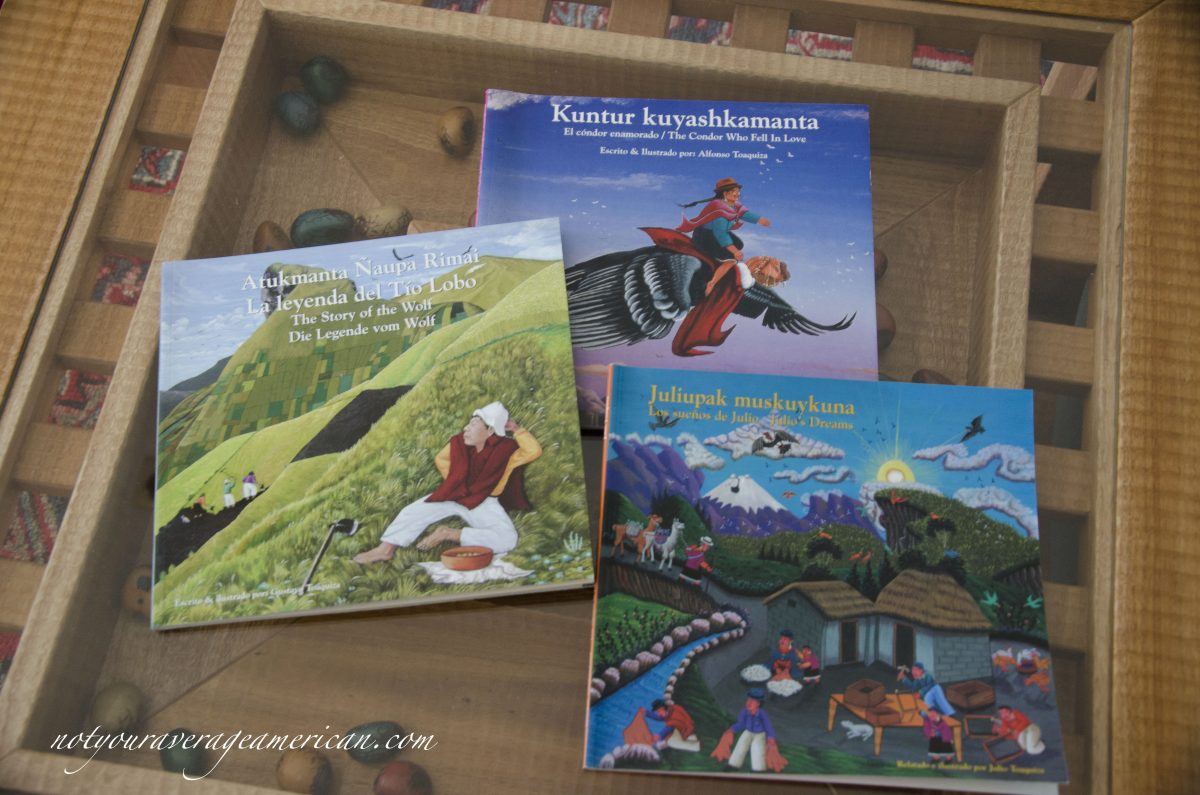


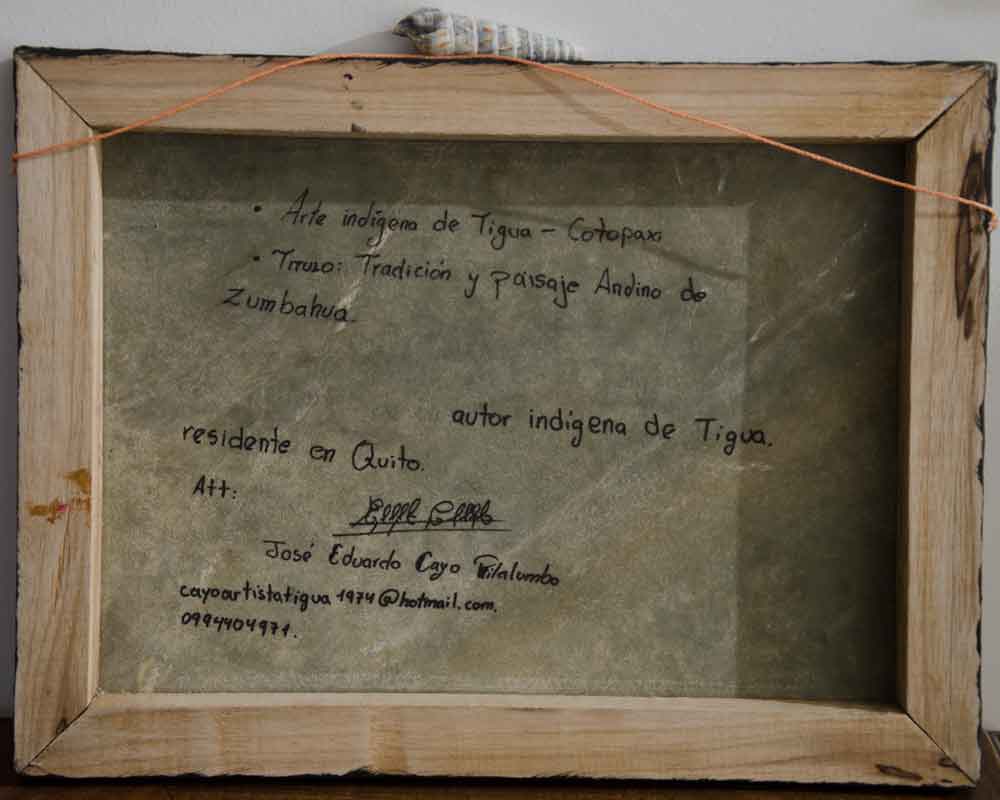
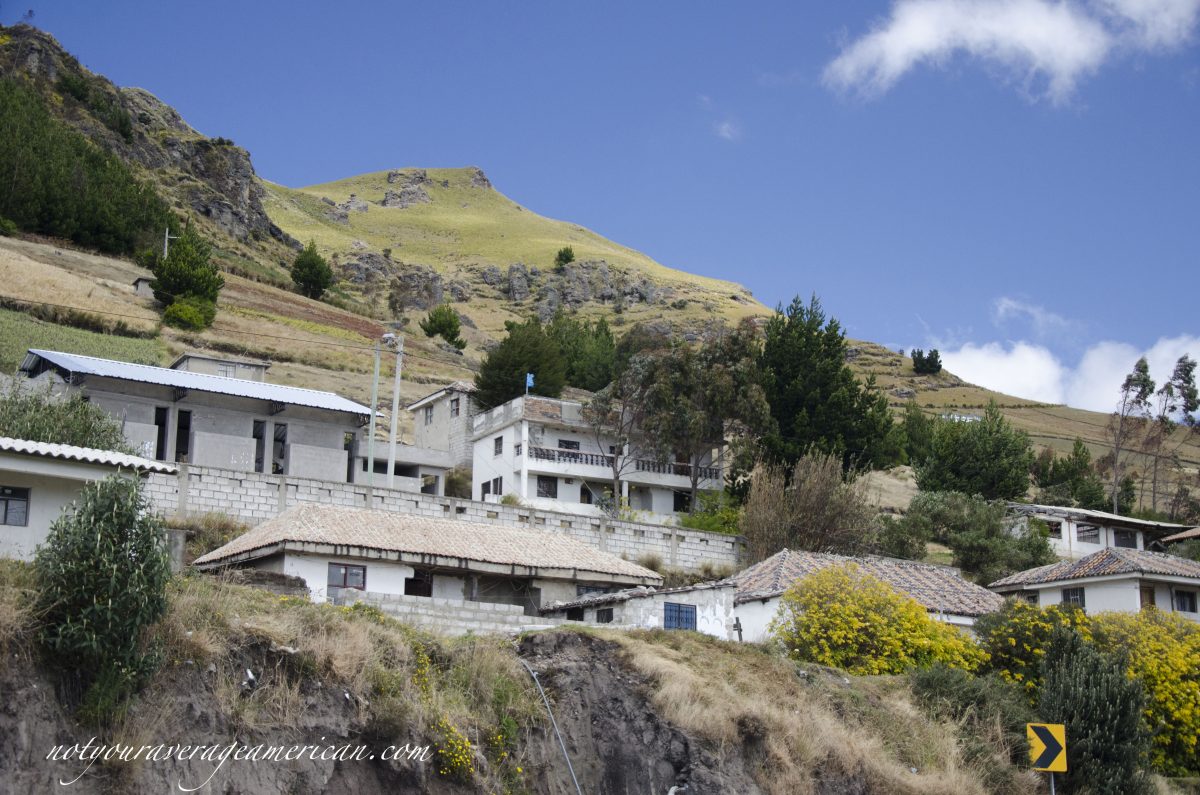
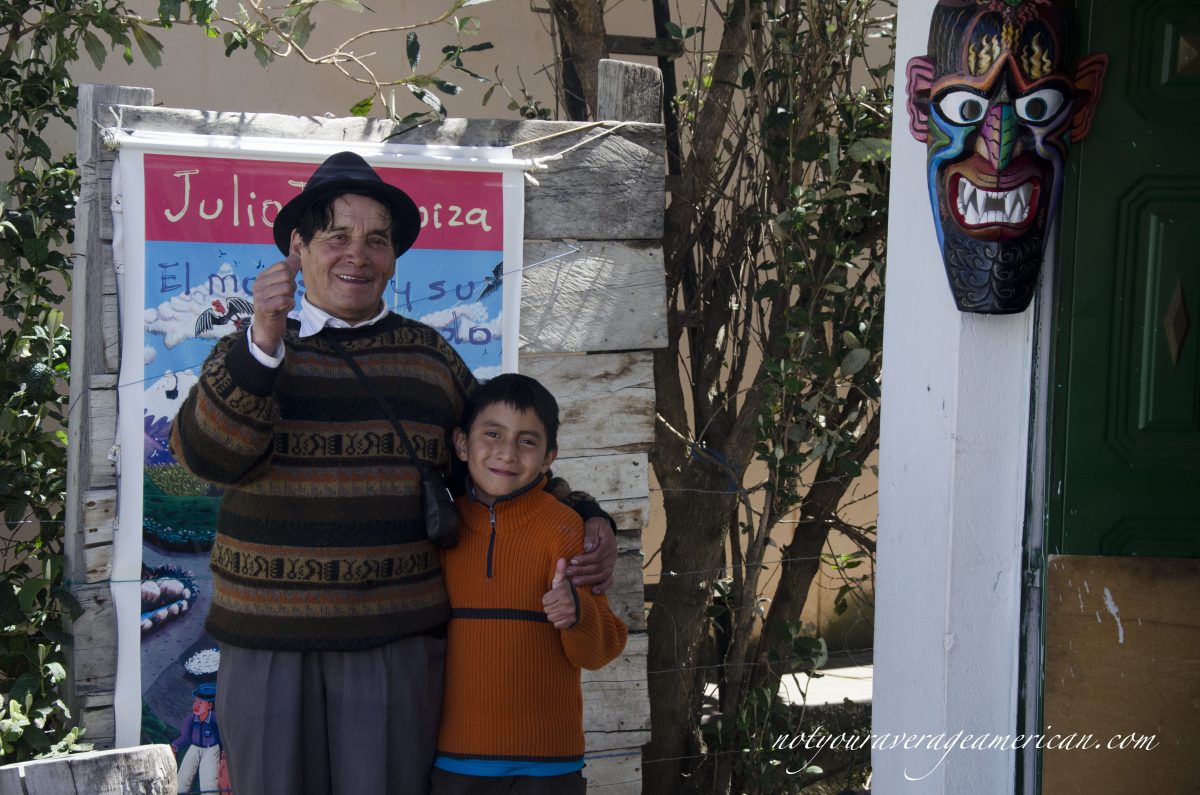
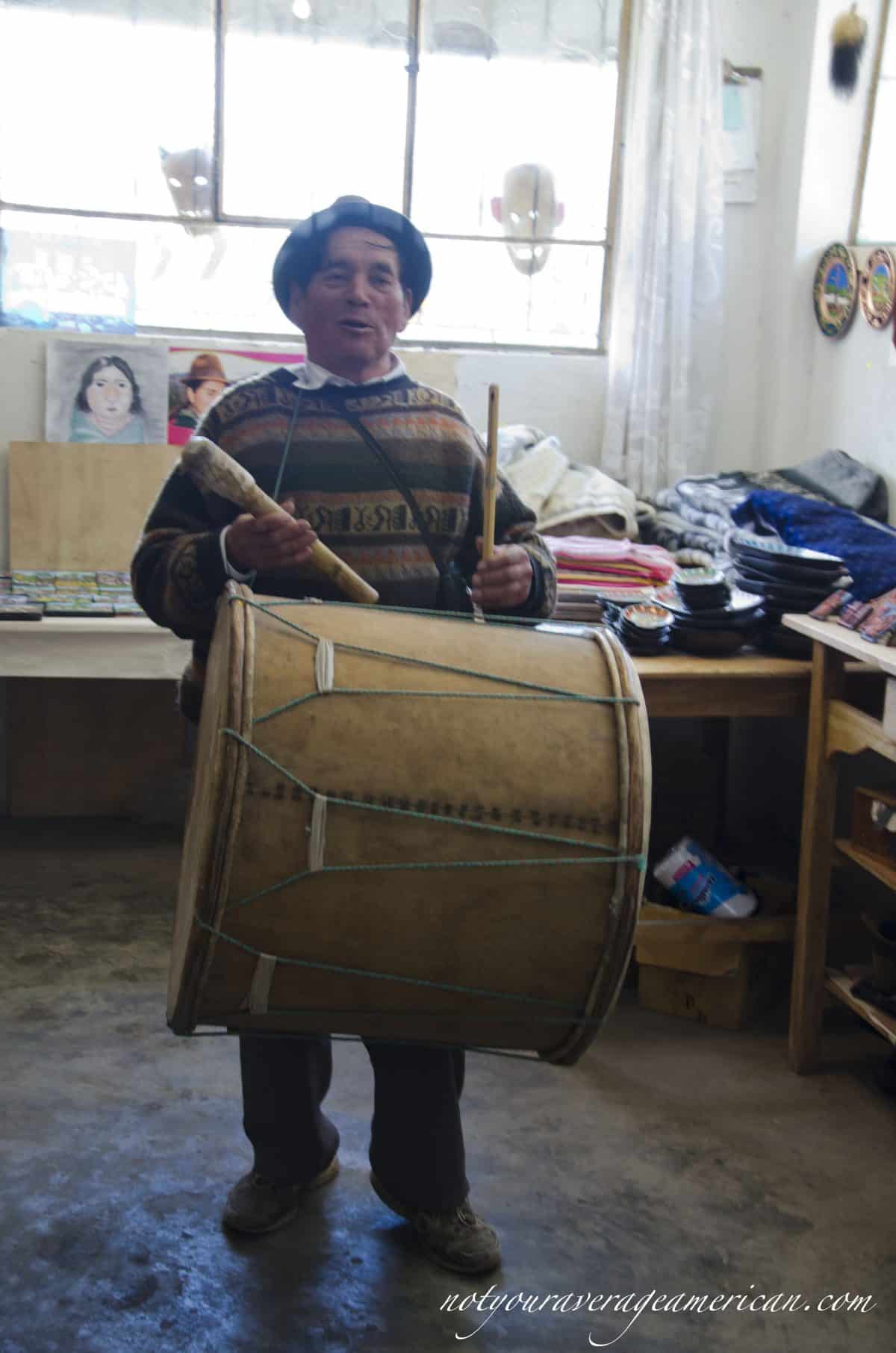
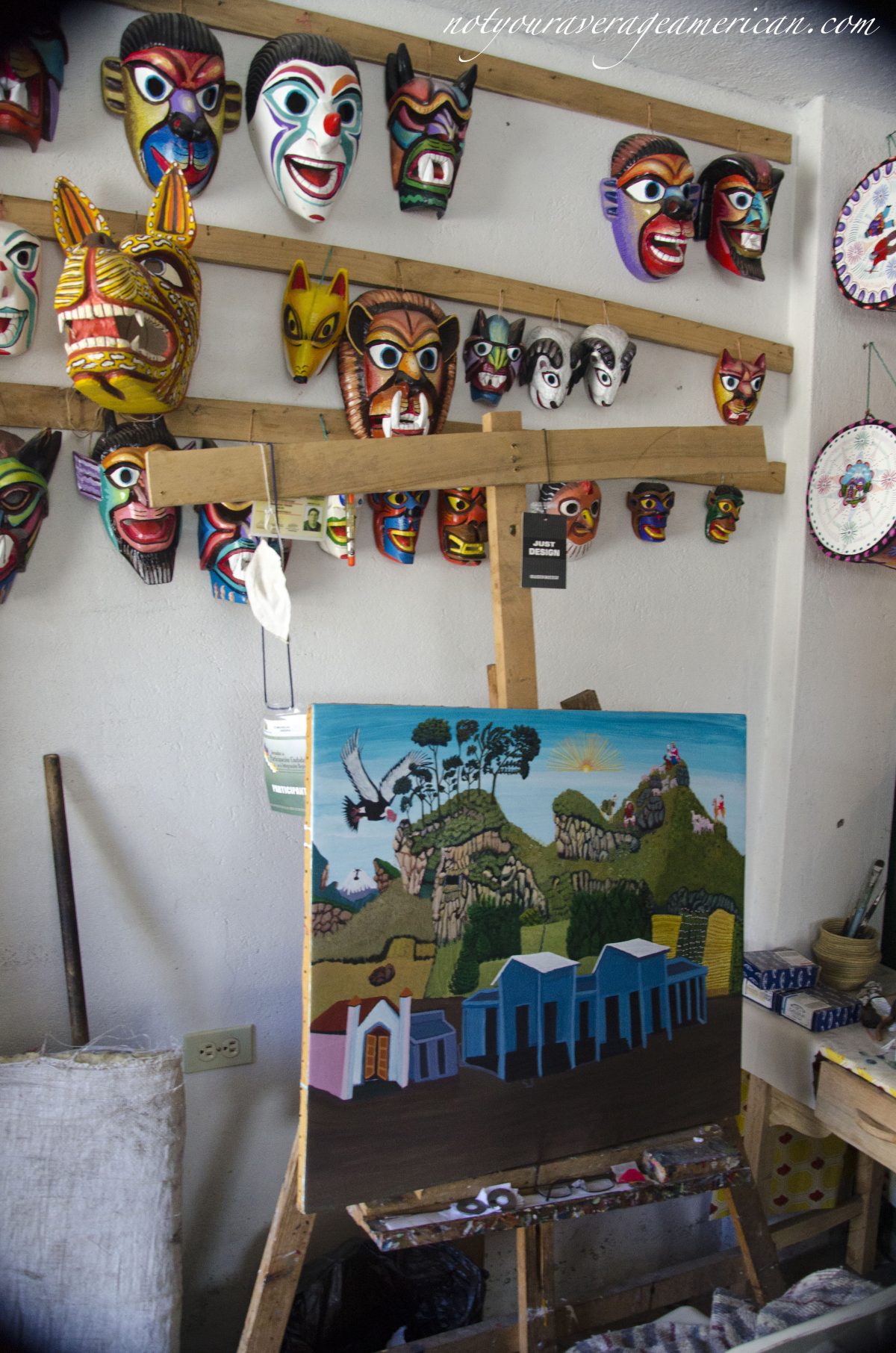
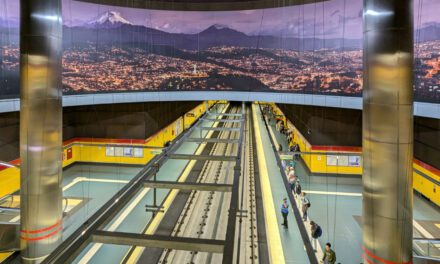
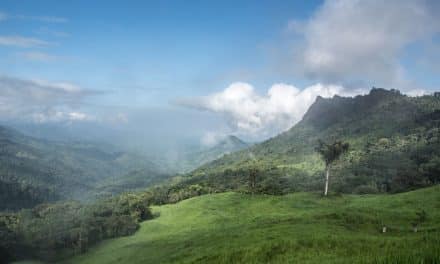



















Very nice piece. I am a long time friend of Julio’s (since 1985) and Danny’s godparent. The gallery next to Julio’s belongs to his oldest son, Alfredo., and his son, Alfonso, has a gallery a little farther down the road toward Zumbahua. Alfredo’s daughter (Sisa Toaquiza) is a very popular Ecuadorian singer. Julio’s sons Gustavo and Alfonso also have bands … El Tio Lobo y Las Celositas y El Condor Enamorado. .. An incredibly talented family.
Hi Tom, It’s so nice to hear from you! Thanks for leaving a comment. My experience with Julio and Danny is one of my favorite memories in Ecuador! Thanks for letting me know more about the family!
Hi Angie – what a lovely post and that video is a delight! My family is staying a couple nights at the Posada de Tigua, and I wanted to try and find Julio’s gallery, so now I know where to find him! I first learned about him because he has collaborated with an Ecuadorian-American artist/photographer, Karen Miranda. They’ve made some very cool works.
Anyway, trying to estimate how much cash I should bring, what would you estimate is the range of prices for his art? And how do they package the art? We’ll be traveling another 10 days after Tigua, and I’m wondering how we’ll protected the art will be…
Hi Geoff! You are in for a wonderful time! I don’t know if Julio will remember my visit, but please tell him I said hello!
As to prices, his artwork is very affordable, especially compared to the works in the main gallery down the street. Like most artist from Tigua, he prices by size rather than by quality. It has been a couple of years since our last visit, but a painting about 8×10 or so would likely run $60-80 at his gallery. Larger paintings can be a $150-250 and the very largest $400 or more. I would suggest packing some large, padded mailers of the size painting you plan to purchase and use those to help protect your work. Alternatively, you could ask if someone could deliver the work to your hotel in Quito. For this, you would want to confirm with the hotel beforehand. And there is an element of risk of the paintings not arriving.
If you end up in the Artisan’s market in the Mariscal in Quito, one of the Toaquiza sons occasionally has items for sale at one of the booths. And in Otavalo, look for Inez Toaquiza at the Plaza de los Ponchos. She makes some beautiful and detailed paintings in the same style.
Please feel free to share some pictures with us!
Outstanding. Thanks a lot for the info Angie. Good to know I should bring packing stuff with us. I assume the artworks can be rolled up, so if we brought a poster tube that could work? Assuming we’re able to meet with Julio, I’ll definitely mention your name and get some pictures to share with you!
Sorry for the late reply, Geoff. I’m afraid a packing tube won’t work. These paintings are done on a cured sheepskin that has been stretched and nailed to a wooden frame. They cannot be removed without doing damage to the painting.
The paint on many of them is thick and should not be placed up against another surface without some layer of protection like tissue paper or bubble wrap. But with a layer, they could be placed face to face and then wrapped in brown paper. That’s why I recommended taking padded mailers; I think they would make a good fit for the smaller paintings.
I look forward to seeing your photos!
This is super-helpful and glad I asked you!! Many thanks for the info, Angie. And I’ll make sure to circle back upon our return 😉
I really enjoyed reading this, thank for you sharing it! I really enjoy Tigua art and am going to visit Ecuador for the first time soon.Do you think the bubble wrap mailers would work for taking back home to the US in my suitcase? I had read that the artists who did not leave for the big city view their art as the real deal, and the people who left for the cities were no longer connected to the land, and therefore the pure art. Do you think that’s true or is the quality of the style the most important thing and some of the better artists just want their art to elevate their living standard?
Hi Musashi! I do think the bubble mailers would work well for smaller artwork. Padding with clothing in the suitcase works as well! As to the hierarchy of artists – there are definite family relationships that determine some of the quality of work. And many, many artists have started developing their own styles. As with any type of folk art, there are examples that are just not worth collecting. I have seen good and bad both in and near Tigua and in big cities. And I have found pieces as far away as Quito and Otavalo that I just had to buy. I usually look for quality brushwork, details like faces on people or animals, and definitely quality of paint. You will pay more for work found in Tigua at the main gallery but make sure to check out some of the smaller galleries as well… especially Julio Toaquiza. In Otavalo, I recommend looking for Inez Toaquiza (not sure of her relationship Julio). Her artwork is impressive. At the artisans’ market in the Mariscal in Quito, there is a family stall that often sells the artwork of some of Julio’s sons and usually has copies of their books. Please share photos of your purchases with us! We would love to see what treasures you find!
This was, indeed, an experience of a lifetime. Hope to see the paintings you chose someday! Would love to read the books.
It adds so much to your enjoyment when you meet the creator your chosen art work. I felt like I was there with you. Our memories are of the weavers at the equator. Every time I look at our wonderful wall hanging I think of “Jose” the weaver. Your experience was SO rich! Loved every word of your description. Dance, Dance, Dance!
Ann, I think you and I travel in very similar ways! The artwork in the article are also the pieces we own. I look forward to buying a couple more over time and to have a small collection for our wall. We have such an eclectic mix already and these pieces just add to the magic of it all!
Beautiful experience! Beautiful art! Beautiful memory for you! This was such a pleasure and joy to read!
So glad you dropped by! And thanks so much for the comment… comments like yours keep me writing!
What a tough duty station, kudos for persevering! Thanks for this, as well as yesterday’s photo, what elevation were you at?
Good question…the lake surface is 3500m (11482 ft). The trail itself is a constant up and down with the highest point at almost 4000m (13,123 ft). The truth is, I never look before we go anymore. I don’t need the psychological barrier getting in the way of a good hike!